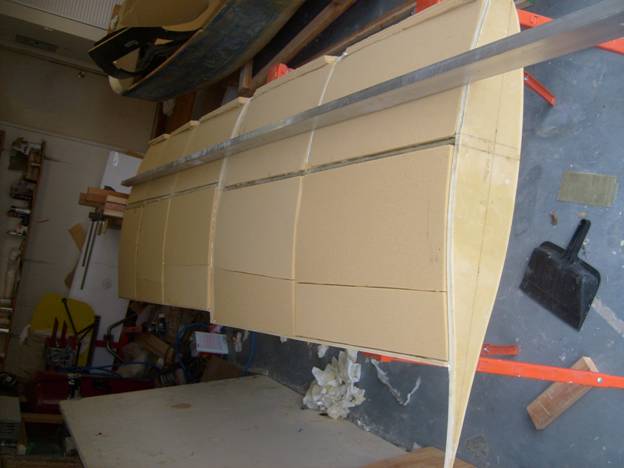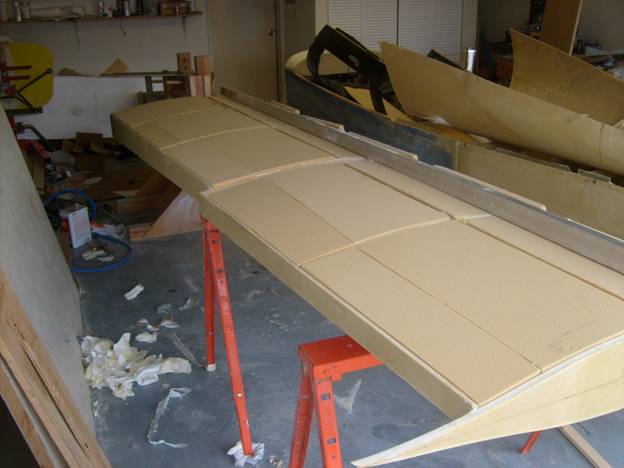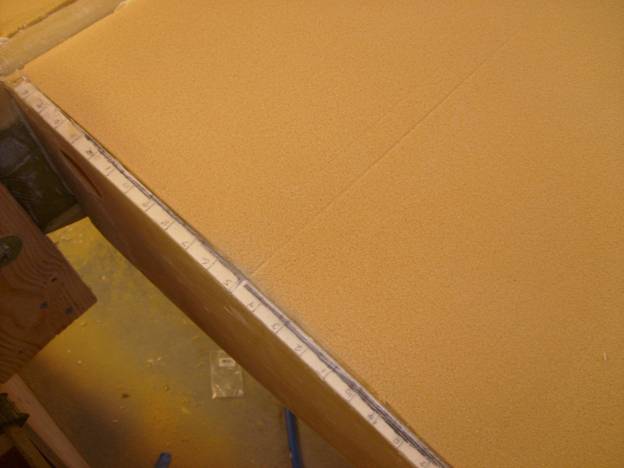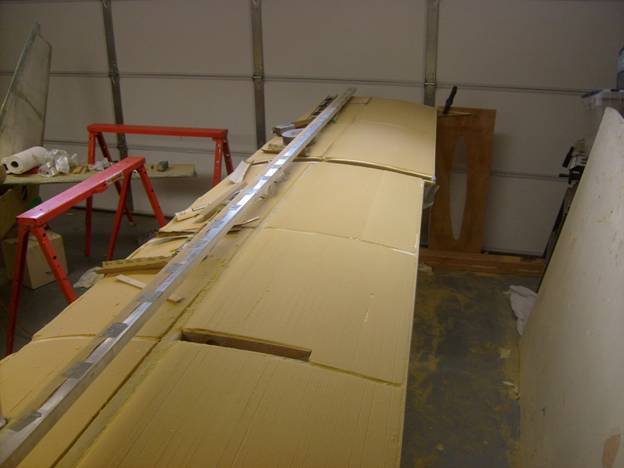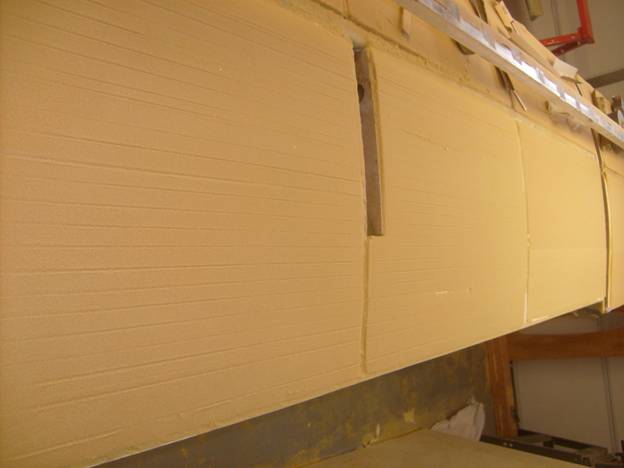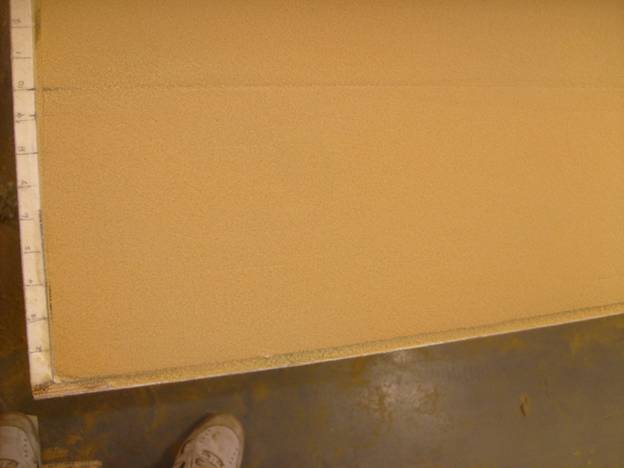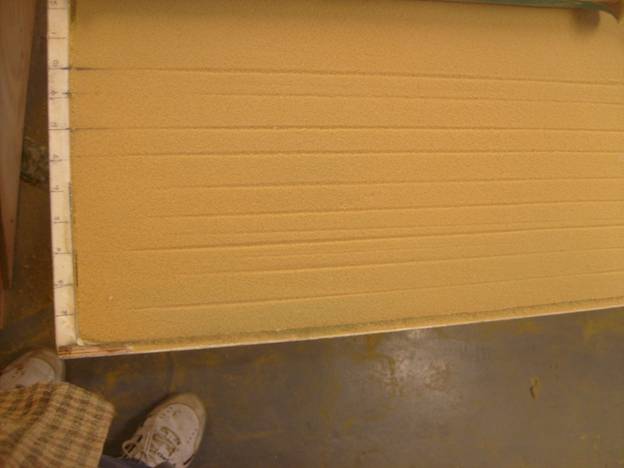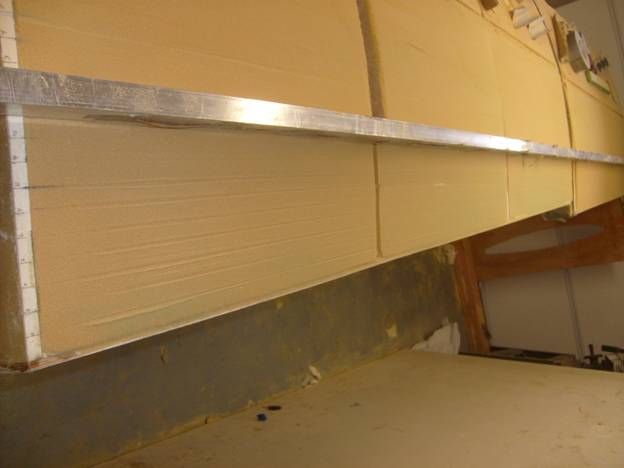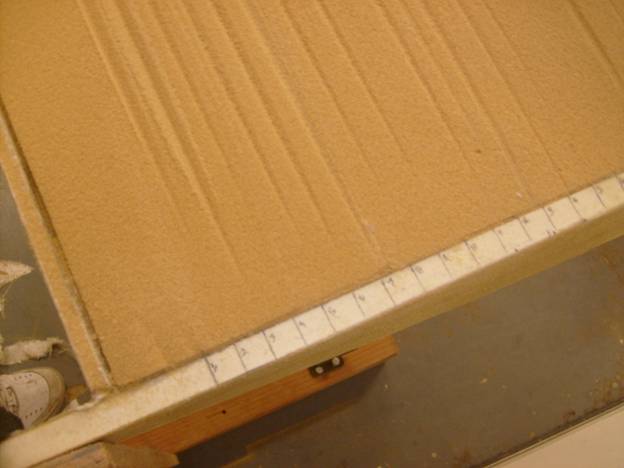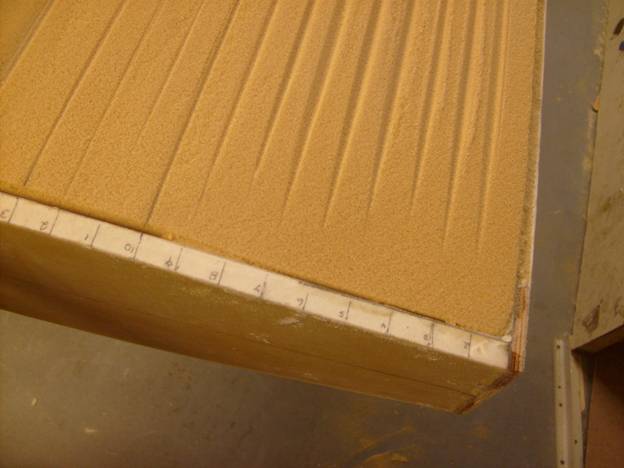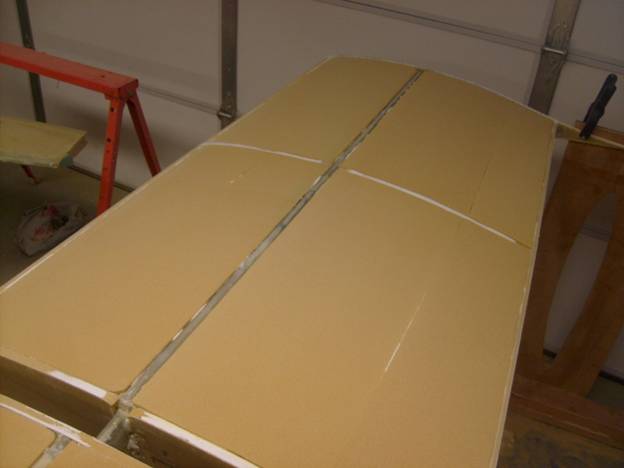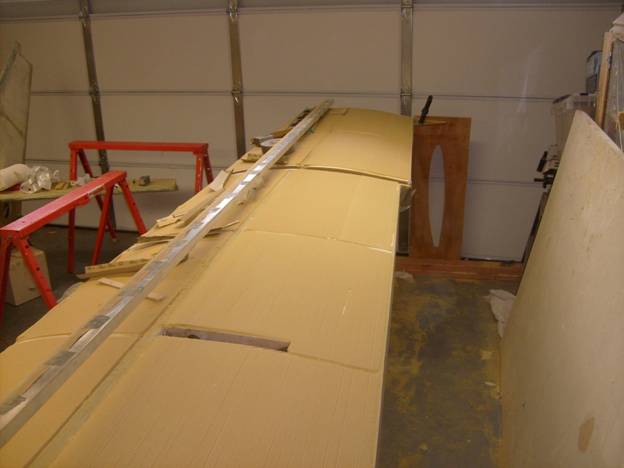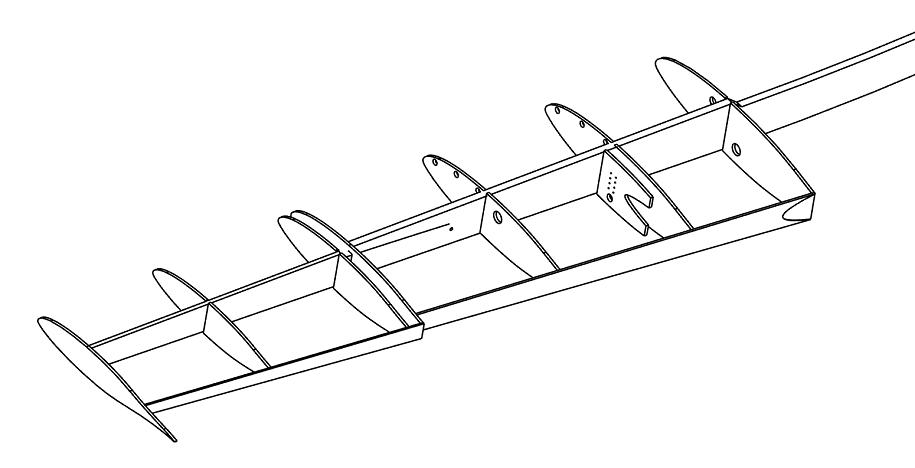 |
|---|
Once we have the inside of all of the wing bays glassed, flip the wing over. It is time to shape the wing to the proper contour. We will primarily rely on the A rib and the G rib to define the shape of the wing. If we mounted the other ribs correctly, they too should be lined up with the A and G, but if one is slightly out of alignment, it will be sanded down to conform to the reference shape of the A and G ribs. If you have not done so already, trim away the rib sections connecting the forward to the aft halves.
Secure the wing well, as we will be applying some force with our sanding board and need the wing to be stable. Insure that each of the ribs has its level line level. The G rib will have to be supported as the wing will begin to take on a twist as it gains weight.
Using the edge of the long sanding block, sand notches into the foam between each of the reference marks. The sanding block should not have sandpaper where it contacts the A and G ribs—do not sand notches into these ribs.
Use a smaller sanding block, about 12 to 18” in length and sand the foam down until the notches JUST disapear. Always keep the block oriented so it is parallel with the notches. You can repeat the process of sanding a set of notches with the long board, then sanding the rest of the foam surface till they JUST disappear.
Once we have sanded our wing to the proper shape, it is time to flip it back over and add the trailing edge flange and the flange between the inboard and outboard wing sections.
PREVIOUS<---------------Manual Home ------------------>NEXT |
